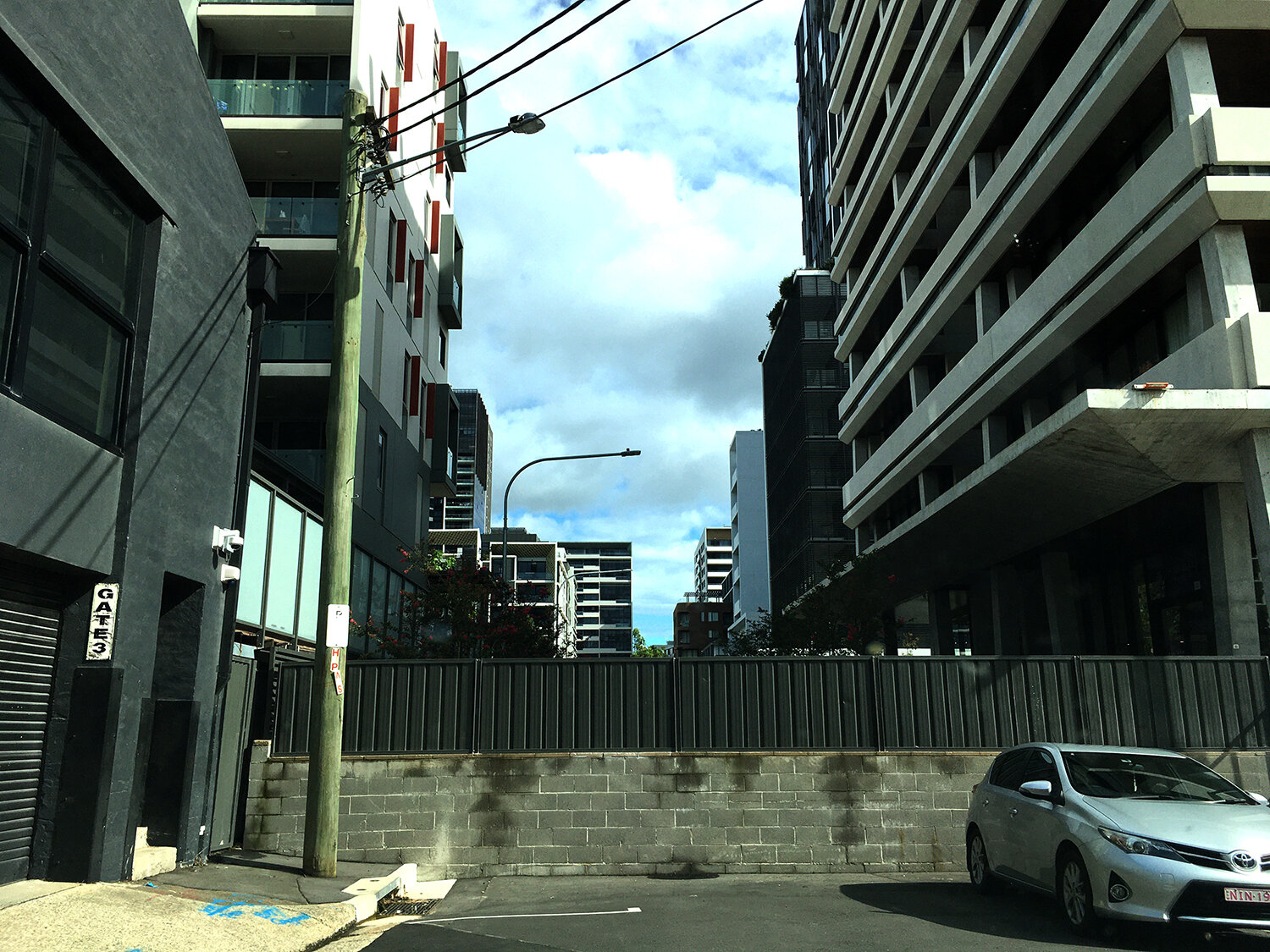May Street and May Lane, St Peters on Sunday, 23 Feb 2020
I often drive through May Street when I go to Marrickville, and I took photos in the area for other projects in the past. Tugi and Dianna have their framing workshop Graphic Art Mount in May Lane where at least half of Sydney’s artists get their exhibition framing done, including me. May Lane is known for its graffiti. Tugi made the best out of this fact and invited street artists a few years back to do graffiti on the walls officially, like a proper exhibition with opening nights. There is still graffiti everywhere.
Today the shop is closed because it’s Sunday. A fair amount of people pass through the lane. Some are doing a phone video with a young woman in yellow. Some walk their dog, and some come from St Peters train station.
May Street has a large lawn with some trees, a small playground, and a football oval. There is another green strip named “May Street Playground”. It’s a tiny bit of grass with a couple of trees and two benches. Someone left a French novel, torn jeans, and a towel.
There are artists’ studios in a red brick building and still a lot of old workshops and traders. Sadly, at a closer look, many of them have a ‘For Lease’ sign displayed. At the Country and Town Hotel end of May Street, they are just finishing the WestConnex road works of this section.






























































